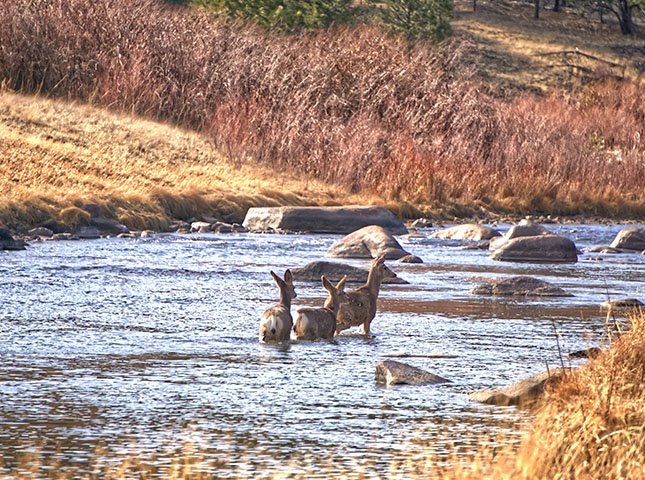Deer, often seen gracefully bounding through forests and meadows, possess a range of abilities that might surprise many. Among these is their capability to swim. But just how far can these elegant creatures swim? Let’s dive into the world of deer and explore their aquatic prowess.
Table of Contents
Key Takeaways
- Deer are strong swimmers and can cover significant distances in water.
- Their anatomy, including long legs and a streamlined body, aids in swimming.
- Deer often swim to find food, escape predators, or traverse water bodies in their habitat.
- While they can swim, it’s not their primary mode of movement, and they prefer land.
Deer in Water: Natural Swimmers
Deer are naturally adept swimmers. While they might not be seen in water as frequently as on land, they have the ability to swim when the situation demands.
Anatomy Aiding Aquatics
Deer have a streamlined body and long legs, which help them move efficiently in water. Their hooves, while primarily designed for traction on land, provide a certain degree of propulsion in water.
Reasons for Taking the Plunge
Deer don’t just swim for the sake of it. They have specific reasons to venture into water:
- Food Search: Some aquatic plants are a part of the deer’s diet. They might wade into shallow waters to feed on these plants.
- Escaping Predators: Water can be a refuge from land-based predators. A deer might choose to swim across a river or lake to put distance between itself and a threat.
- Navigating their Habitat: Deer habitats often include water bodies. To move from one part of their territory to another, they might need to swim across rivers or lakes.
How Far Can They Swim?
While deer are capable swimmers, they have their limits.
Distance Covered
Deer can swim up to 12 miles in one day. However, such long distances are not common. Most deer swims are much shorter, spanning rivers or lakes within their territory. The average adult deer can comfortably swim a mile without showing signs of distress.
Factors Influencing Their Swim
Several factors can influence how far a deer can swim:
- Age and Health: Young, healthy deer have more stamina and can swim longer distances compared to older or sick individuals.
- Water Current: Swimming in a fast-moving river requires more energy than in calm waters. The current can either aid or hinder their progress.
- Weather Conditions: Cold water can sap a deer’s energy faster, reducing the distance it can swim.
Safety During the Swim
While deer are good swimmers, water poses risks. Young fawns, in particular, are vulnerable in water. If they cannot find a way out, they might panic and drown. It’s essential for them to learn swimming skills early and follow older deer to understand safe paths and exit points.
Frequently Asked Questions
1. Do all species of deer swim?
Yes, most species of deer are capable swimmers. Whether it’s the white-tailed deer in North America or the red deer in Europe, these animals have shown the ability to swim when required. However, the frequency and distance might vary based on their habitat and specific needs.
2. Are there any dangers for deer while swimming?
While deer are competent swimmers, water does pose certain risks. Predators like crocodiles or alligators in some regions can pose threats. Additionally, strong water currents can be challenging for deer, especially the young or weak ones, and might lead to drowning.
3. How do fawns learn to swim?
Fawns are not born with the ability to swim but pick it up quickly. They usually follow their mothers and learn by observing and mimicking. Within a few weeks of birth, most fawns can swim reasonably well.
4. Why don’t we see deer swimming often?
While deer can swim, it’s not their primary mode of movement. They prefer land and will only take to water for specific reasons like escaping predators, searching for food, or navigating their habitat. Hence, the instances of observing deer in water are relatively less.
5. Can deer swim in saltwater?
Yes, deer can swim in both freshwater and saltwater. There have been instances where deer have been spotted swimming in the ocean, crossing between islands or even covering significant distances along coastlines.
6. How do deer’s hooves aid in swimming?
While deer hooves are primarily designed for traction on land, they can also function as paddles in water. The split hooves can spread slightly, increasing the surface area and providing a bit more propulsion.
7. What should one do if they spot a deer swimming?
If you encounter a deer swimming, it’s best to observe from a distance without disturbing it. Approaching or trying to interact can stress the animal, leading to potential accidents or injuries.


